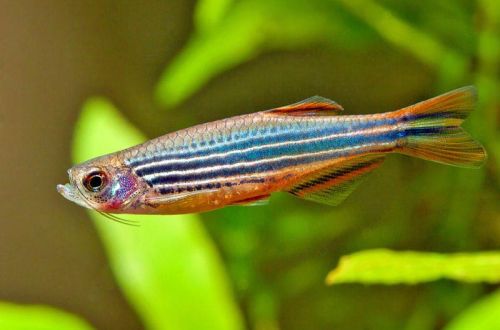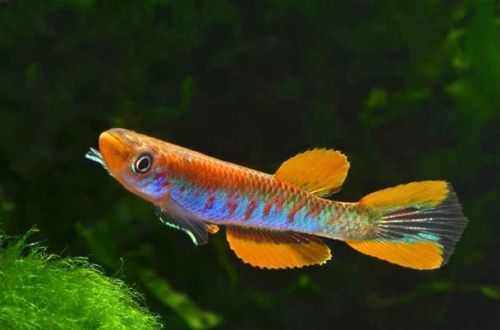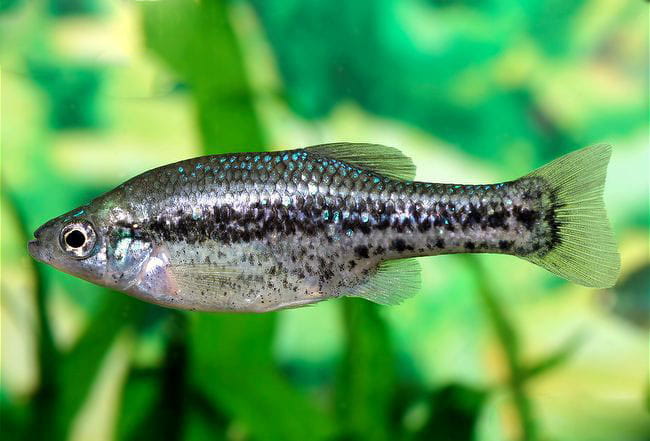
Ameca brilliant
Ameca brilliant, scientific name Ameca splendens, belongs to the Goodeidae family. An active mobile fish, it has a cocky character, which limits the potential range of compatible species, but meanwhile makes it an interesting object for observation. You can’t call it boring. Relative is easy to keep and unpretentious in food, it can be recommended to beginner aquarists.

Habitat
The fish comes from Central America, wild populations are common in some mountain streams, in particular the Rio Ameca and its tributaries, which flows along the eponymous city of Ameca near Guadalajara, the capital of the state of Jalisco in Mexico. In 1996, this species was included in the list of extinct from the natural habitat. However, modern research has established that fish still inhabit this area.
Requirements and conditions:
- The volume of the aquarium – from 80 liters.
- Temperature – 24 – 32°C
- Value pH — 7.0–8.0
- Water hardness – medium hardness (9-19 dGH)
- Substrate type – any dark
- Lighting – moderate
- Brackish water – no
- Water movement – moderate
- Size – up to 9 cm.
- Meals – any
Description
Males are somewhat smaller, have a more slender body. The color is dark gray with numerous patches of black spots of irregular shape. Pigmentation is located mainly along the lateral line. The fins are also dark in color with bright yellow edging around the edges. Females are less graceful, have a large rounded body. The coloration is lighter with a similar pattern of dark spots.
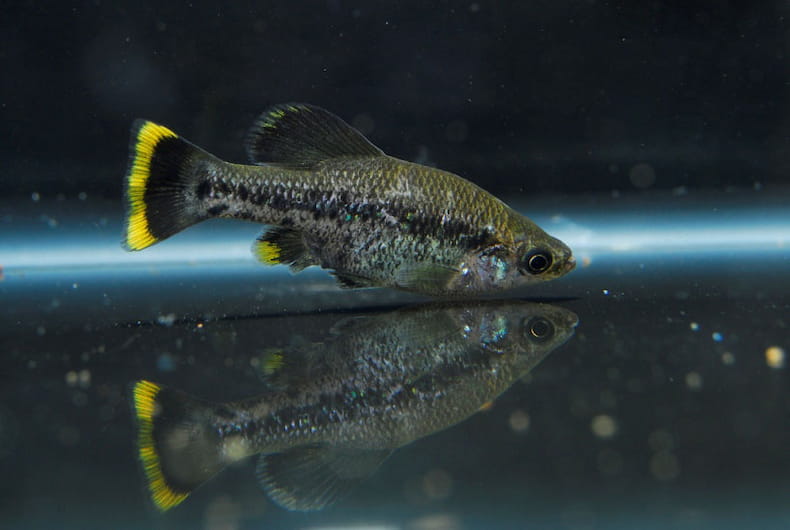
Food
Omnivorous species. Ameka brilliant accepts all types of dry (flakes, granules) feed. Mandatory inclusion of herbal supplements in the diet: specialized feed, spirulina, spinach, dried nori seaweed (rolls are wrapped in them), etc. Feed two or three times a day in the amount eaten in 5 minutes.
Maintenance and care
Like any native of their flowing mountain rivers, Ameca is very demanding on water quality. The main condition is the minimum level of pollution. Water parameters fade into the background, as they have a solid range of GH and pH values.
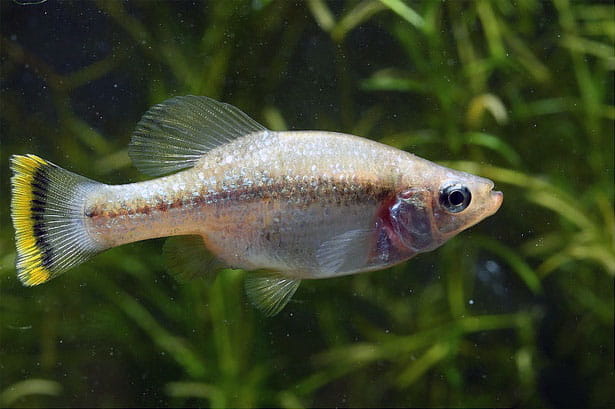
A school of fish produces a lot of waste, so to maintain acceptable water quality, it will require a weekly renewal of 30-40% of it and the placement of a productive filter. As necessary, clean the soil from organic waste and remove plaque from the glass of the aquarium. Also of no small importance is the saturation of water with oxygen; for this purpose, an aeration system with several spray stones is used. The bubbles should be as small as possible, but still reach the surface without dissolving along the way. Other minimum equipment required includes a heater and a lighting system.
The design is dominated by dense thickets of plants with free areas for swimming. The substrate is any dark, it allows the fish to show their best colors. The remaining elements of the decor are selected at the discretion of the aquarist.
Behavior
An active and sometimes aggressive fish, which is especially evident among males, but intraspecific skirmishes almost never lead to injury. Over time, an alpha male stands out in the group, which is distinguished by a more intense color. During feeding, they actively compete with each other, in the case of joint keeping with slow-moving species, the latter may not receive their part of the feed. In addition, the excessive activity of Ameca brilliant limits the choice of neighbors. Fish of similar temperament and size should be selected or kept in a species aquarium.
Breeding / breeding
Easily bred at home, do not require the creation of special conditions or a separate tank. Spawning can take place at any time during the year. The female initiates the mating season by swimming diagonally next to the male and performing a trembling motion. When the male is ready, mating takes place. Pregnancy lasts from 55 to 60 days, during which time the abdomen is very swollen. The fry appear fully formed and are ready to take regular food, only in crushed form. You can keep with your parents, no cases of cannibalism were noticed
The peculiarity of this species from other viviparous fish is that during pregnancy, the female forms special internal structures, similar to the placenta in mammals, through which the fry are fed. Due to this, the fry are much longer in the womb and when they appear, they are already completely self-sufficient. In the first days, the fry have noticeable small processes, the remains of the same “placenta-umbilical cord”.
Fish diseases
They have a high degree of disease resistance. Under favorable conditions, health problems do not arise, difficulties begin only in neglected aquariums or when in contact with already sick fish. Read more about symptoms and treatments in the Aquarium Fish Diseases section.



